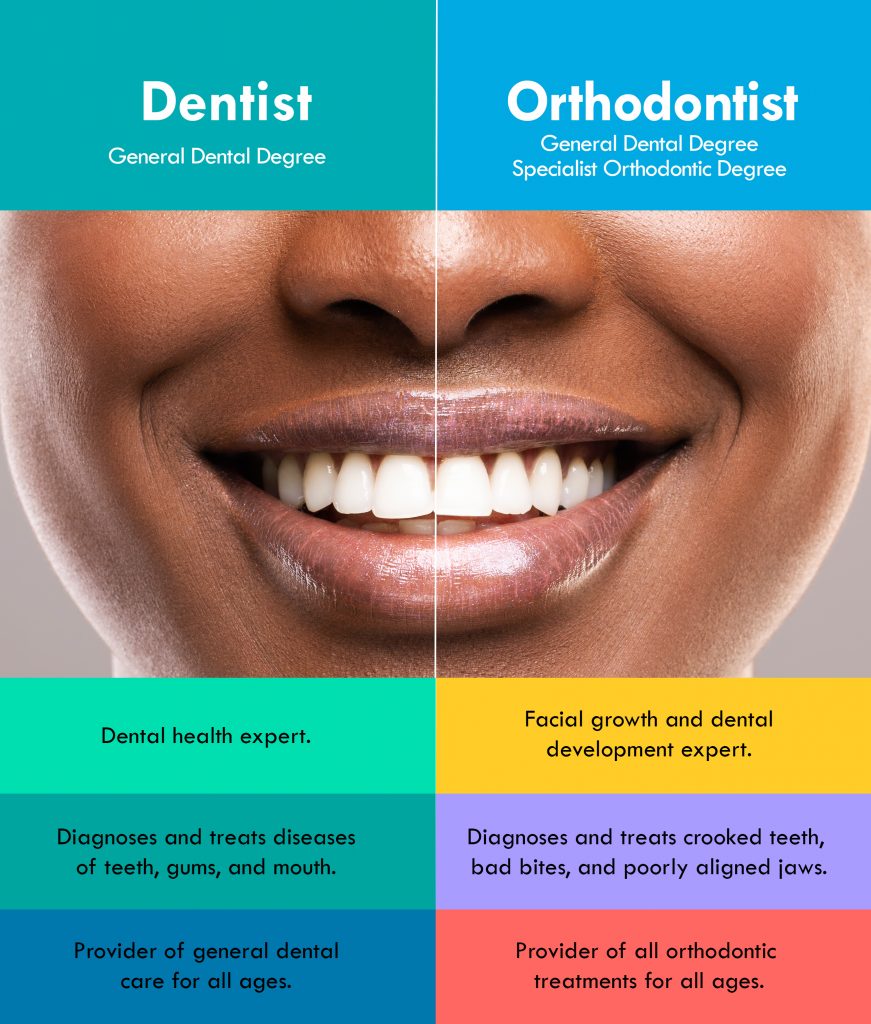The 6-Second Trick For Legacy Orthodontics
Excitement About Legacy Orthodontics
Table of ContentsThe Ultimate Guide To Legacy OrthodonticsLegacy Orthodontics Can Be Fun For AnyoneThe Best Guide To Legacy OrthodonticsLegacy Orthodontics Things To Know Before You BuyAll About Legacy Orthodontics
At Advanced Orthodontics, we offer clients with a holistic treatment experience. Furthermore, we provide adjustable therapy routines, flexible settlement alternatives and a fun, pleasurable experience. leesburg braces. Telephone call ( 480) 357-4900 today to learn more and schedule an appointment.An orthodontist is a dental practitioner trained to diagnose, protect against, and deal with teeth and jaw irregularities. They remedy existing problems and are trained to identify troubles that may establish in the future. Orthodontists function with people of any ages, from youngsters to grownups. People typically connect an excellent smile with good health.
Malocclusion, or misaligned teeth, can lead to oral concerns, including tooth decay, gum illness, and challenging or excruciating eating. Not everybody is born with straight teeth. If you have a poor bite or huge spaces in between your teeth, you might wish to speak with a dental professional focusing on orthodontic treatment.
How Legacy Orthodontics can Save You Time, Stress, and Money.
( Image Credit: DigitalVision/Getty Images) Orthodontists utilize fixed and detachable oral tools, like dental braces, retainers, and bands, to change the placement of teeth in your mouth. Orthodontic treatment is for oral problems, including: Uneven teethBite troubles, like an overbite or an underbiteCrowded teeth or teeth that are too far apartJaw misalignmentThe goal of orthodontic treatment is to improve your bite.
A healthy bite guarantees you can consume, eat, and speak correctly. While you might think about orthodontists as generally for youngsters or teenagers that require braces, they can fix dental issues at any kind of age. Orthodontists attend university, oral school, and orthodontic institution. After graduation, they spend 2 or 3 years in an orthodontic residency program.
All orthodontists are dental experts, but not all dentists are orthodontists. Orthodontic residency programs supply extensive, focused instruction for dental professionals. They concentrate on two locations: Just how to correctly and safely relocate teeth How to properly guide advancement in the teeth, jaw, and faceOnce an orthodontist has actually finished training, they have the choice to end up being board accredited.
An Unbiased View of Legacy Orthodontics
Malocclusion leads to tooth overcrowding, an irregular jaw, or uneven bite patterns. Malocclusion is usually treated with: Your orthodontist attaches metal, ceramic, or plastic square bonds to your teeth.
Some people need a headwear to aid move teeth right into line with stress from outside the mouth. A retainer is a custom-made gadget that keeps your teeth in area.
They're frequently utilized on youngsters. They can produce additional area in the mouth without having to draw teeth. If you have a serious underbite or overbite, you might require orthognathic surgical treatment (also called orthodontic surgical procedure) to extend or reduce your jaw. Orthodontists use wires, surgical screws, or plates to support your helpful site jaw bone.
You may need to see an orthodontist if you have: Crowding or otherwise enough room for all of your teethOverbite, when your upper teeth come over your base teethUnderbite, when your base teeth are as well much forwardSpacing or issues with gapsCrossbite, which is when your top teeth fit behind your base teeth when your mouth is closedOpen bite or an upright void between your front base and top teethMisplaced midline, when the facility of your base and top teeth don't align Correcting a dental malocclusion can: Make attacking, eating, and speaking easierImprove the balance of our face and your general appearanceEase discomfort from temporomandibular joint disordersDifferent your teeth and make them easier to cleanse, helping prevent dental cavity or dental caries It's usually a dental professional who first notices misaligned teeth throughout a routine examination.
Our Legacy Orthodontics Statements

During your first orthodontic assessment, you'll likely have: A dental examPhotos taken of your face and smileDental X-raysPanoramic (360 level) X-rays of your face and headImpressions to develop molds of your teethThese examinations will aid your orthodontist recognize how to wage your treatment. orthodontist. An orthodontist is a dental expert who's had training to treat your teeth and jaw
Orthodontists might do surgery, exams,X-rays,and more to aid you acquire a more comfortable, healthier smile. An orthodontist is concentrated on your bite, so something like a cracked tooth would certainly be taken care of by a dental professional. Orthodontists are dental professionals however not all dental experts are orthodontists. Orthodontists are concentrated on your bite, or the method your teeth fit with each other, and the straightness of your teeth.
Ever wondered how celebrities always appear to have flawlessly lined up teeth? Orthodontists are oral experts that concentrate on dealing with abnormalities in the teeth and jaws.
Legacy Orthodontics Things To Know Before You Get This

, orthodontists have a diverse toolkit at their disposal. These tried-and-true braces make use of a system of brackets bonded to the teeth and linked by cords.
Clear aligners, like Invisalign, are a popular alternative for people seeking a much more discreet treatment option. These detachable trays are tailor-made to gradually move the teeth's position. Headgear might be used along with braces or aligners to apply added targeted forces, especially for fixing jaw discrepancies. In instances of slim jaws, palatal expanders can be made use of to develop space for appropriate tooth alignment.